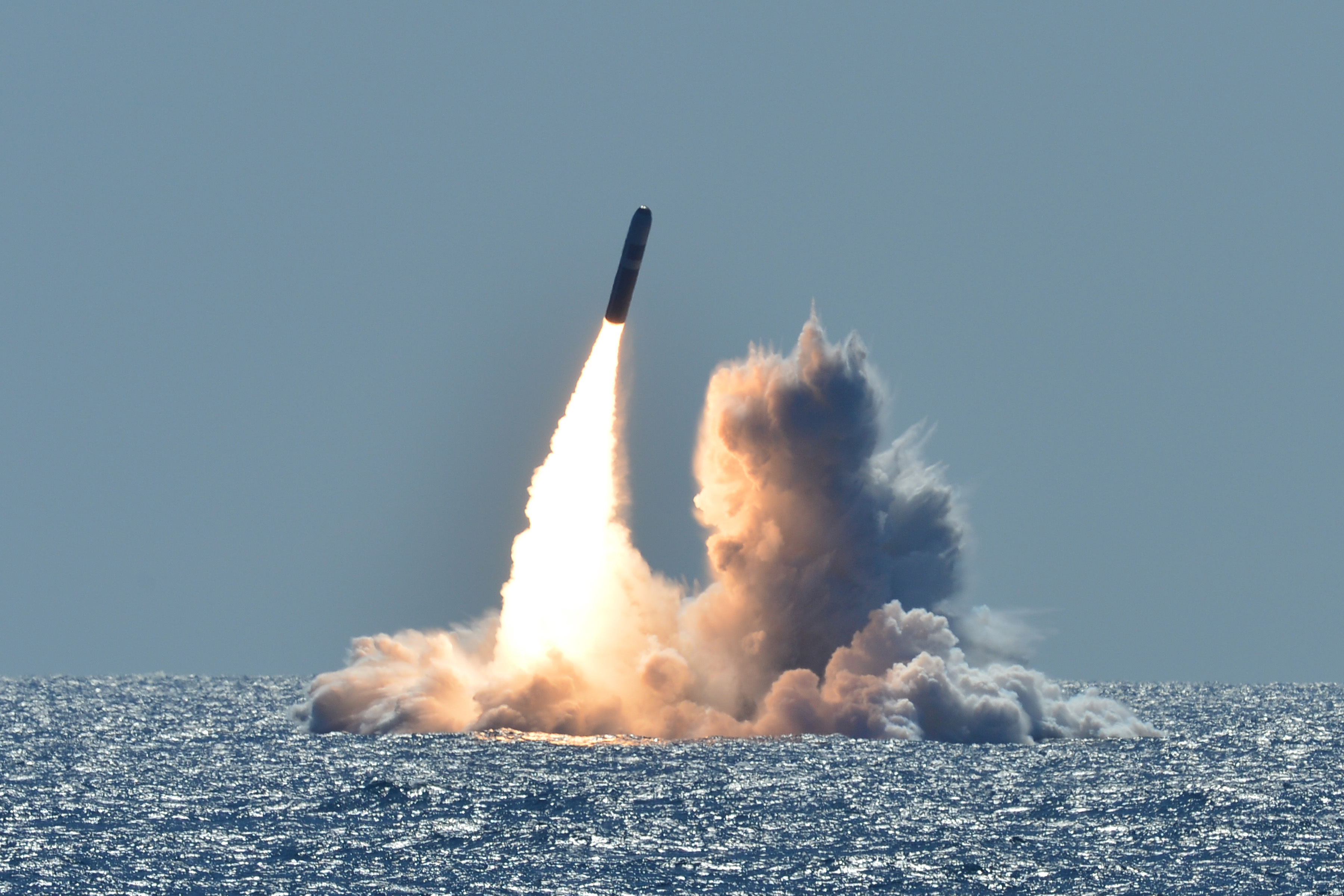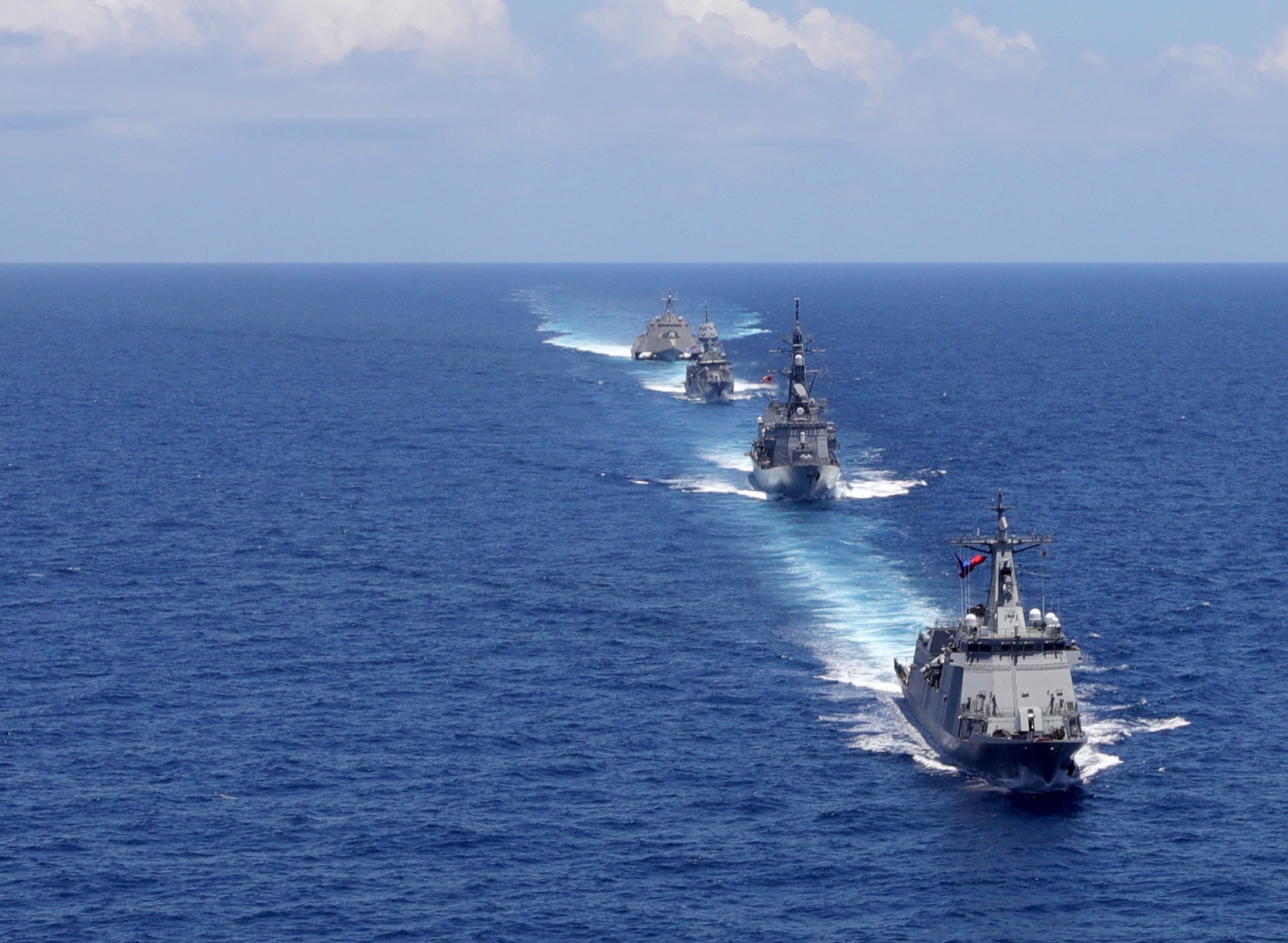
The senior admiral directing the strategic systems program placed a strong emphasis on the rigorous testing of modernized Trident missiles to ensure their accuracy and reliability, as the Navy transitions from the Ohio-class to the Columbia-class ballistic missile submarines.
Speaking Thursday at an online forum of the Air Force Association’s Mitchell Institute, Vice Adm. Johnny Wolfe said, “I have to keep that reliability for the next 60 years.” The incremental approach of modernizing electronics and guidance, for example, are the steps the military is taking “to get maximum life of all those things that won’t age out” over that time.
He said the Trident D5 Extension Life II upgrade will start this year. “From a missile perspective … we have to make sure that it is rock solid.” He called this “the big ticket for us” in the coming year.
Wolfe added, “As the Columbia platforms get out there [in the early 2030s], the weapons system will be proven.” He said the Navy will be buying an additional 108 missiles for its inventory to be used for deployment and testing.
As for the W93 Mark 7 warhead program that sits atop the Trident D5, “we need to start the investment” and examine the technology now to stay ahead of potential threats, he said. The National Nuclear Security Administration, a semi-autonomous body in the Department of Energy, is a key player in weapons modernization and the development of propulsion systems. It came under intense congressional scrutiny last year over its spending priorities.
“My money goes to all the non-nuclear,” Wolfe added.
In an answer to a question as to whether having two fewer Columbia-class submarines than the 14 currently in the fleet will affect deterrence, he said, “time offline will be less” for maintenance, such as the two to three years needed for mid-life refueling now. That translates into more time on patrol, rather than in the shipyard.
Wolfe said the replacement for the Ohio–class ballistic missile submarines remains “the Navy’s no. 1 [spending] priority.” To keep costs under control and delivery of the first submarine on schedule, he said the Navy has learned much from the Virginia-class and its modernized payload, as well as adopting mature design concepts into planning.
In his directorate, “we built strategic weapons ashore” facilities for advanced prototyping and testing for both the Ohio and Columbia-class platforms to assist the transition.
Likewise, “we’re in lockstep” with everything the United Kingdom is doing in its transition from its Vanguard-class ballistic missile submarines to Dreadnought.
Wolfe said an Analysis of Alternatives for a sea-launched nuclear cruise missile will be finished this year and design could start in 2022 with a spending request. In an answer to another question, he said, “if you have a sea-launched cruise missile it changes [potential adversaries’] calculations” about a possible attack. “I think we’re raising the threshold” of deterrence by pursuing this, Wolfe said. He specifically cited Russia’s deployment of tactical nuclear weapons on cruise missiles on its borders and its doctrine of “escalate to de-escalate” as the threat to be deterred.
Earlier, Wolfe noted that “Russia certainly has a triad” of nuclear deterrent forces, and “China is on its way to a triad.”
For the United States, the triad of sea-based ballistic missiles, land-based ballistic missiles and bombers “are the right way to go.” The combination affects potential adversaries’ “thought calculus” because “you can’t just go after one thing,” even on land-based systems because they have different ranges and targeting.





